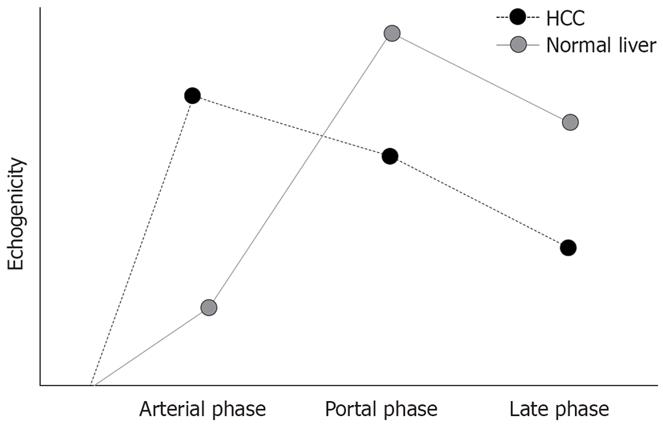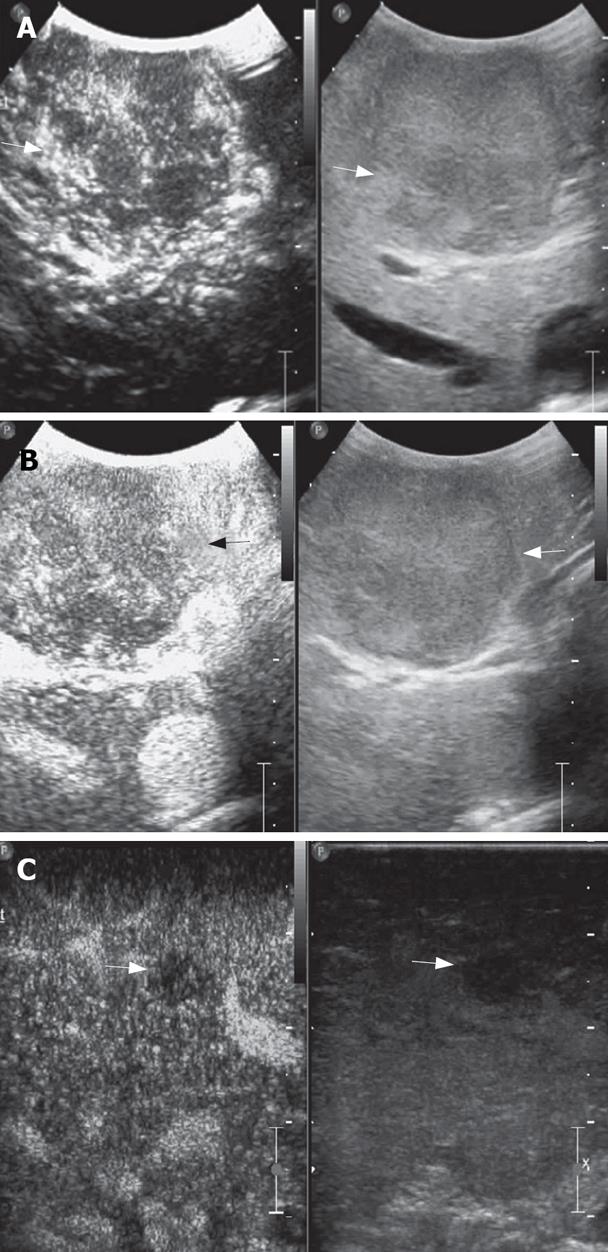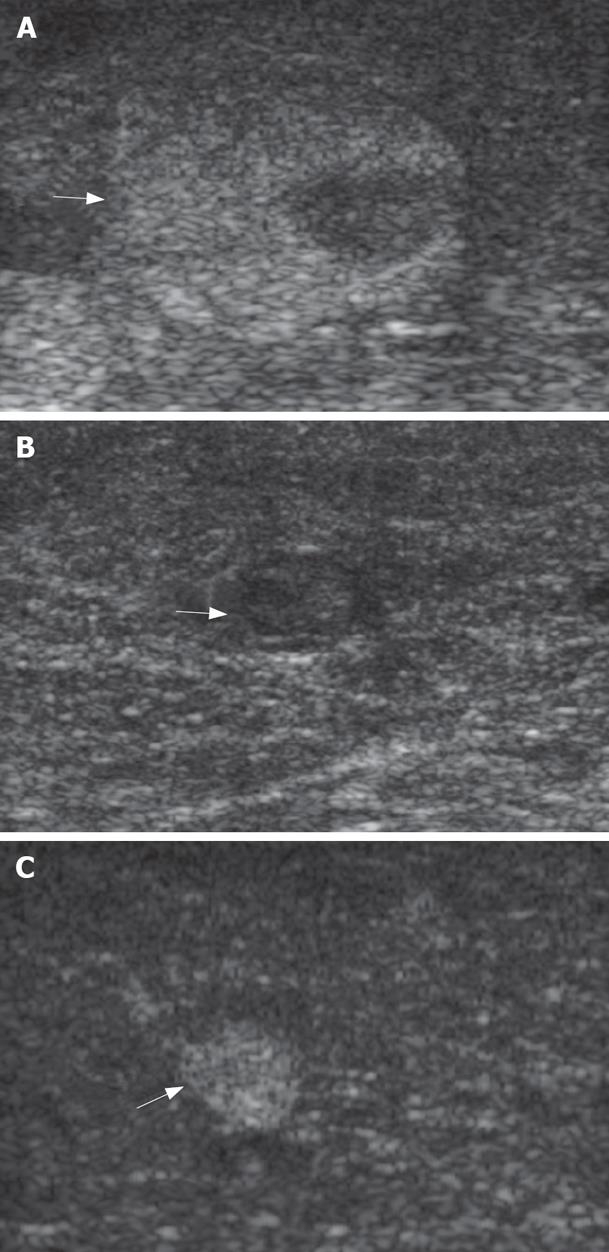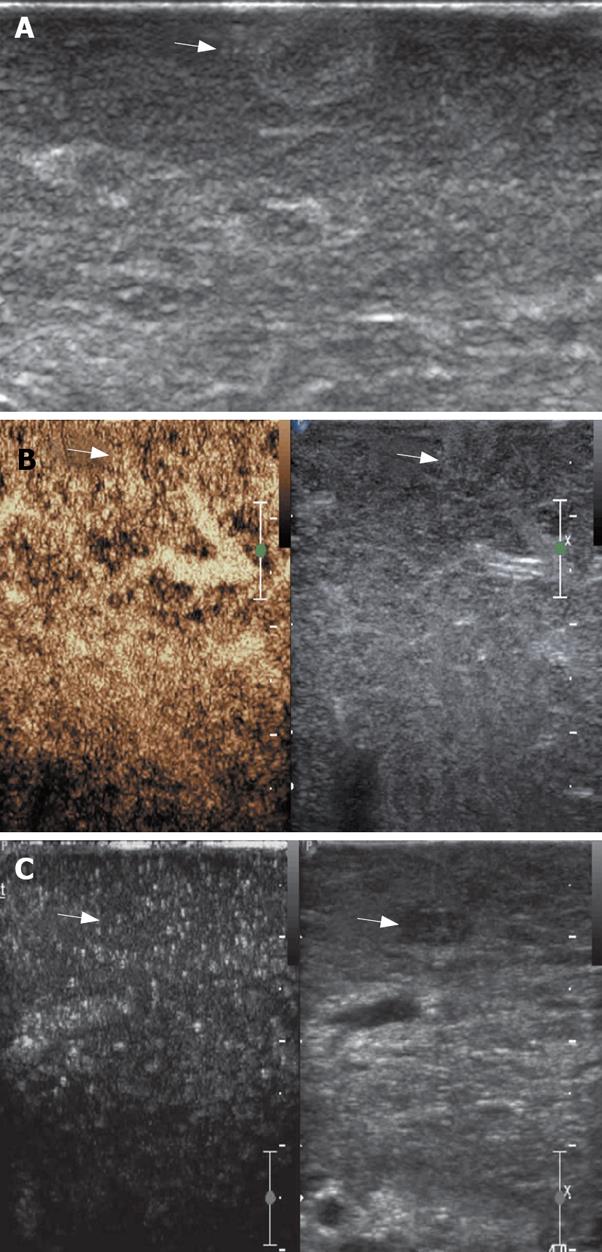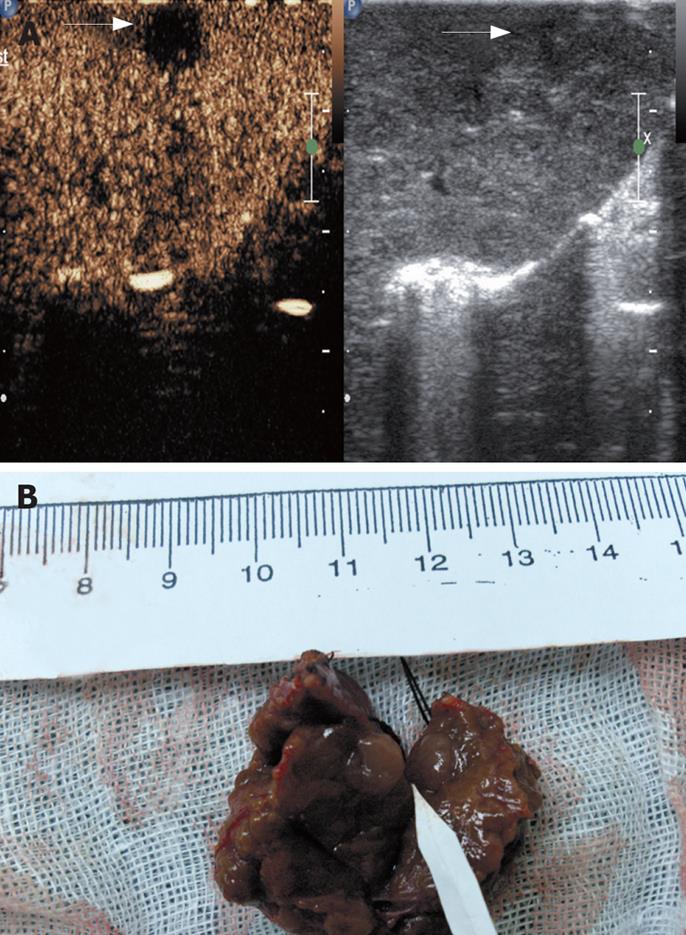Copyright
©2008 The WJG Press and Baishideng.
World J Gastroenterol. Jul 7, 2008; 14(25): 4005-4010
Published online Jul 7, 2008. doi: 10.3748/wjg.14.4005
Published online Jul 7, 2008. doi: 10.3748/wjg.14.4005
Figure 1 It illustrates the enhancing pattern of HCC and normal liver parenchyma.
With more arterial supply, HCC appears hyperechoic in the arterial phase and the lesion is slightly and then clearly hypoechoic, and relative to the surrounding parenchyma in the portal and late phases with the washout of contrast agents.
Figure 2 A mosaic nodule in a cirrhotic liver at IOUS.
A: At arterial phase, the nodule shows early enhancement (arrows); B: The nodule demonstrates contrast agent wash-out in late phase: it was a typical appearance of HCC and proved malignant at histology (arrows); C: Another hypoechoic nodule at IOUS was hypoenhanced in late phase: it was considered intrahepatic metastasis and confirmed malignant at histology (arrows).
Figure 3 A mosaic nodule in a cirrhotic liver at IOUS.
A: The nodule shows no contrast agent uptake in arterial phase (arrows); B: The nodule shows no contrast agent uptake in late parenchymal phase (arrows); C: Specimen of the mass after resection proved to be HCC at histology.
Figure 4 Appearance of nodules in a cirrhotic liver at IOUS.
A: Mosaic pattern nodule (arrows); B: Hypoechoic nodule (arrows); C: Hyperechoic nodule (arrows).
Figure 5 A: A hyperechoic nodule detected at IOUS in cirrhotic liver; B: The nodule shows no arterial enhancement and late parenchymal phase wash-out; C: A hypoechoic nodule detected at IOUS in cirrhotic liver, and it shows the same enhancing pattern with the surrounding parenchyma.
These two nodules were considered dysplastic and the diagnosis was confirmed by pathologic examination.
Figure 6 A: An isoechoic nodule measuring 7 mm was missed at IOUS but appeared clearly at late phase of CE-IOUS with contrast agent wash-out; B: Specimen of the nodule after resection proved to be HCC at histology.
- Citation: Lu Q, Luo Y, Yuan CX, Zeng Y, Wu H, Lei Z, Zhong Y, Fan YT, Wang HH, Luo Y. Value of contrast-enhanced intraoperative ultrasound for cirrhotic patients with hepatocellular carcinoma: A report of 20 cases. World J Gastroenterol 2008; 14(25): 4005-4010
- URL: https://www.wjgnet.com/1007-9327/full/v14/i25/4005.htm
- DOI: https://dx.doi.org/10.3748/wjg.14.4005









